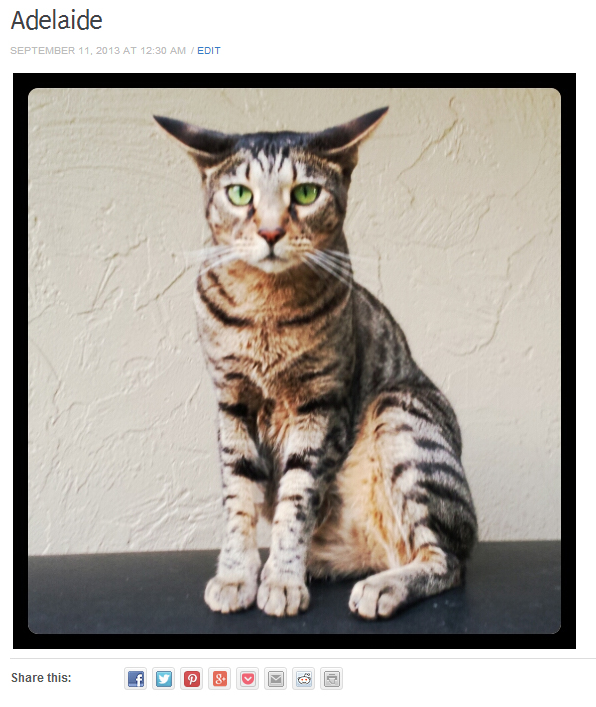 Last week’s big news was the launch of the Pressgram app which allows you to publish filtered photos to your WordPress blog. Soon after the launch, controversy sprung up concerning Pressgram’s terms of service, proprietary license and security.
Last week’s big news was the launch of the Pressgram app which allows you to publish filtered photos to your WordPress blog. Soon after the launch, controversy sprung up concerning Pressgram’s terms of service, proprietary license and security.
Closer examination of Pressgram’s Terms of Service revealed gaping holes where the notion of owning your own data is concerned. They quickly moved to revise their TOS to clarify that they can reproduce, modify and adapt your content for use within the app to provide the social networking aspect:
By submitting Content to Pressgram for inclusion on your User account, you grant Pressgram a world-wide, royalty-free, and non-exclusive license to reproduce, modify, adapt and publish the Content solely for the purpose of displaying, distributing and promoting your Content in the app (e.g. displaying your photos within the app to your social network and friends).
Through all of this discussion, we discovered that many publishers have no desire to be part of another social network, so the middle man aspect of Pressgram using member photos within their app doesn’t make much sense to them.
Also, despite being wholly dependent on WordPress to publish photos to the user’s blog, the app maintains a proprietary license. Those who wish to hold true to open source principles may be interested in an alternative to the Pressgram service.
Open Source Tools for Publishing Filtered Photos to WordPress
Publishing filtered photos to your WordPress site is actually very easy to accomplish using only open source software. Obviously you could use the WordPress mobile app for your device, but this may be even more than you need.
One very easy way is to set up posting by email – yes, finally a fun use for a very old WordPress feature.
The two components necessary for this include:
- Mobile app for filtering the photos
- WordPress plugin for retrieving emails
This solution doesn’t take more than 5 minutes to set up. It’s ideal for those who want to publish filtered photos and own their own work entirely, without becoming part of a social network.
1. Download an open source mobile app for filtering photos.
2. Create an email address known only to you.
3. Install and configure a plugin that lets you post to WordPress via email.
Open Source Mobile Apps for Filtered Photos
Anypic
 Anypic is an open source iOS app for filtering photos, among other features. Their website actually encourages you to download the source code and tinker with it as you please.
Anypic is an open source iOS app for filtering photos, among other features. Their website actually encourages you to download the source code and tinker with it as you please.
They even offer a tutorial to help you fork their code to create your own version of Anypic.
Trovebox
 Trovebox, formerly known as OpenPhoto, is another open source option with apps for Android, iPhone and iPad. They offer a community edition on github that you can grab, hack, re-purpose and improve upon, if you want.
Trovebox, formerly known as OpenPhoto, is another open source option with apps for Android, iPhone and iPad. They offer a community edition on github that you can grab, hack, re-purpose and improve upon, if you want.
Backspaces
The Backspaces app was created as an open source version of Instagram and its code is readily available on github. Their developers utilized Brad Larson’s GPUImage, an open source iOS framework for GPU-based image and video processing. If you don’t want to use the Backspaces service but just want to grab the filters, you may find DLCImagePickerController to be useful.
Putting It All Together With WordPress
The great thing about all of the options mentioned above is that if you don’t want to use the service outright or don’t like the terms, you can simply grab the code, change it to suit your needs or make your own photo-sharing app.
There is also a large number of filtered photo service apps that do not require you to sign up in order to use the filtering capabilities on your device. Use the app to add filters to your photos and then share via email to your WordPress site – it’s just that easy.
Once you’ve selected an app to filter your photos, the next steps are very easy.
Set Up An Email Address For Sending Photos
This email address should be known only to you, as it will be used to publish photos directly to your WordPress site. Don’t publish the address anywhere on the web or you will undoubtedly get a ton of spam flowing through. Keep it secret, keep it safe. ;)
Configure Postie or Jetpack’s Post By Email to Publish Your Pictures
For my test, I used Postie, but you could just as easily use Jetpack’s Post by Email or another plugin, depending on your needs for customizing the posts. The convenient thing about Jetpack’s Post by Email is that you don’t have to set up a separate email address. if you like, you can combine it with Publicize to automate further sharing of your filtered photos to social networks.
With Postie there are many options for customizing how often WordPress checks for mail, role access for multi-author posting, category, tags, post status for incoming mails, post format, image sizing, post templates and much more.
Here is a quick example of filtered photos + Postie in action on a blog:
Creating a new email and configuring the plugin took less than 5 minutes to set up. From there you can customize your WordPress site to have a unique design for your photo posts and category archives. You don’t even have to make the posts public if you don’t want to. Set them all to private via the plugin’s settings and you have an easily searchable archive of your mobile images.
Advantages of Publishing Filtered Photos to WordPress via Email:
There are numerous reasons why you might want to opt for posting to your own blog via email, not the least of which is privacy. If you don’t want your photos circulating within a social network, this may be the best and easiest way to ensure that all the traffic goes to your site. You don’t have to worry about any nasty terms of service or use a middle man of any kind. The images go directly from your device to your blog. You can even have them instantly deleted from the photo email account that you set up. The posting process is also not specific to your mobile device, since all devices offer the ability to share images via email.
Perhaps the most important advantage of posting your photos to WordPress via email is that this method allows you to stay true to open source principles. There’s no compromise when you don’t have to entrust your images to a third party service.


I started using trove box while it was still openphoto. There was a plugin that connected to WP: http://wordpress.org/plugins/openphoto/ that still works with trovebox. You can serve your photos directly from trovebox and it has a flexible API for requesting specific sizes on the fly. Pretty slick.